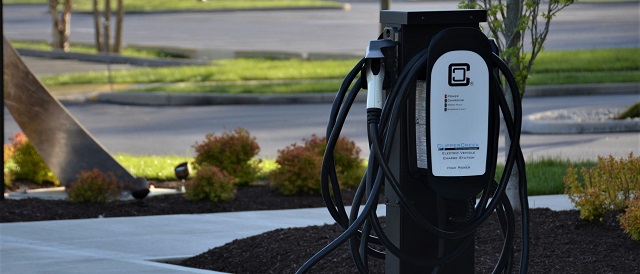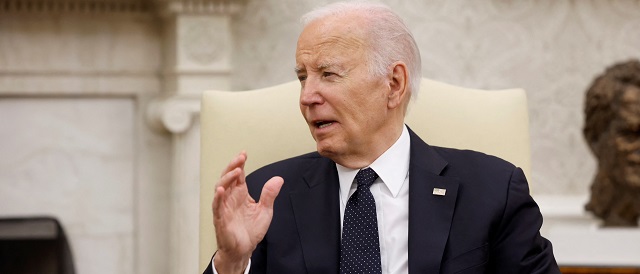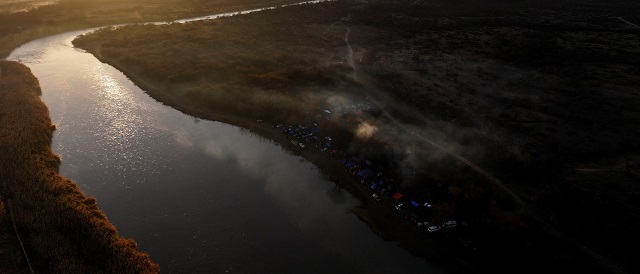Economy
Red tape and uncertainty hurting oil and gas investment in Canada

From the Fraser Institute
By Julio Mejía and Elmira Aliakbari
Investment in the sector fell from $76 billion in 2014 to $35 billion in 2023
Global oil demand is set to reach record highs this year, with growth in natural gas demand on the horizon—and Canada’s oil and gas sector could be a major source of clean and reliable energy, if policymakers help make the country a more desirable place to invest.
While investment in Canada’s oil and gas industry has increased steadily since 2020, it remains far below record levels achieved in 2014. In fact, investment in the sector fell from $76 billion in 2014 to $35 billion in 2023. Less investment means less money to develop new energy projects, infrastructure and technologies, and consequently fewer jobs and less economic opportunity for Canadians. While many factors are at play, investors point to Canada’s policy barriers as major deterrents to investment.
According to a recent study published by the Fraser Institute, which surveys oil and gas investors on the investment attractiveness of 17 energy-producing jurisdictions in Canada and the United States, Wyoming remains the top jurisdiction in terms of investment attractiveness followed by North Dakota and Saskatchewan, the only Canadian jurisdiction ranking in the top five.
Alberta, Canada’s largest oil and natural gas producer, ranked 9th while Newfoundland and Labrador and British Columbia are among the least attractive jurisdictions, ranking 14th and 15th respectively. Put simply, with the exception of Saskatchewan, Canadian provinces are less attractive for oil and gas investment compared to U.S. states.
So, what policy factors hinder Canada’s oil and gas sector?
In short, uncertainty about environmental regulations, disputed land claims, regulatory duplication and inconsistencies, the cost of regulatory compliance and barriers to regulatory enforcement.
More specifically, according to the survey, 100 per cent of respondents for Newfoundland and Labrador, 93 per cent for British Columbia and 50 per cent for Alberta indicated that uncertainty concerning environmental regulations was a deterrent for investment compared to only 6 per cent for Oklahoma and 11 per cent for Texas. Overall, on average, 68 per cent of respondents were deterred by the uncertainty concerning environmental regulations in Canada compared to 41 per cent in the U.S.
This negative perception of Canada’s regulatory environment should come as no surprise. In 2019, the Trudeau government enacted Bill C-69, which introduced subjective criteria including the “social impact” of energy investment and its “gender implications,” into the evaluation process of major energy projects, causing massive uncertainty about the development of new infrastructure projects. While the Supreme Court declared this bill unconstitutional, the energy sector still grapples with uncertainty as it awaits new legislation.
Similarly, the Trudeau government passed Bill C-48, which bans large oil tankers carrying crude oil or persistent oils (including upgraded bitumen and fuel oils) off B.C.’s northern coast and limits access to Asian markets. The Trudeau government also created an arbitrary cap on greenhouse gas (GHG) emissions from the oil and gas industry (while all other GHG emissions were exempt) and introduced new rules on methane emissions. Energy industry leaders have also expressed concern over Ottawa’s clean-fuel standards, which mandate that firms selling gas, liquid and solid fuels reduce the amount of GHG generated per unit of fuel they sell.
Clearly, Ottawa’s aggressive regulations are hurting Canada’s oil and gas industry. In light of the vital role the energy sector plays in the economy, including job creation and government revenues, the federal government should eliminate barriers and implement reform to enhance the sector’s appeal to investors. Otherwise, Canada will keep losing opportunities to the more attractive investment climate south of the border.
Authors:
Economy
‘Gambling With The Grid’: New Data Highlights Achilles’ Heel Of One Of Biden’s Favorite Green Power Sources

 From the Daily Caller News Foundation
From the Daily Caller News Foundation
By NICK POPE
New government data shows that wind power generation fell in 2023 despite the addition of new capacity, a fact that energy sector experts told the Daily Caller News Foundation demonstrates its inherent flaw.
Wind generation fell by about 2.1% in 2023 relative to 2022 generation, despite the 6 gigawatts (GW) of wind power capacity that came online last year, according to data published Tuesday by the U.S. Energy Information Administration (EIA). That wind power output dropped despite new capacity coming online and the availability of government subsidies highlights its intermittency and the problems wind power could pose for grid reliability, energy sector experts told the DCNF.
The decrease in wind generation is the first drop on record with the EIA since the 1990s; the drop was not evenly distributed across all regions of the U.S., and slower wind speeds last year also contributed to the decline, according to EIA. The Biden administration wants to have the American power sector reach carbon neutrality by 2035, a goal that will require a significant shift away from natural gas- and coal-fired power toward wind, solar and other green sources.

A table depicting the decrease of wind power generation in 2023 relative to 2022. (Screenshot via U.S. Energy Information Administration)
“Relying on wind power to meet your peak electricity demands is gambling with the grid,” Isaac Orr, a policy fellow at the Center of the American Experiment who specializes in power grid-related analysis, told the DCNF. “Will the wind blow, or won’t it? This should be a moment where policymakers step back and consider the wisdom of heavily subsidizing intermittent generators and punishing reliable coal and gas plants with onerous regulations.”
Between 2016 and 2022, the wind industry received an estimated $18.6 billion worth of subsidies, about 10% of the total amount of subsidies extended to the energy sector by the U.S. government, according to an August 2023 EIA report. Wind power received more assistance from the government than nuclear power, coal or natural gas over the same period of time.
“This isn’t subsidies per kilowatt hour of generation. It’s raw subsidies. If it were per kilowatt hour of generation, the numbers would be even more extreme,” Paige Lambermont, a research fellow at the Competitive Enterprise Institute, told the DCNF. “This is a massive amount of money. It’s enough to dramatically alter energy investment decisions for the worse. We’re much more heavily subsidizing the sources that don’t provide a significant portion of our electricity than those that do.”
“Policy that just focuses on installed capacity, rather than the reliability of that capacity, fails to understand the real needs of the electrical grid,” Lambermont added. “This recent disparity illustra
Wind power’s performance was especially lackluster in the upper midwest, but Texas saw more wind generation in 2023 than it did in 2022, according to EIA. Wind generation in the first half of 2023 was about 14% lower than it was through the first six months of 2022, but generation was higher toward the end of 2023 than it was during the same period in 2022.
In 2023, about 60% of all electricity generated in the U.S. came from fossil fuels, while 10% came from wind power, according to EIA data. Beyond generous subsidies for preferred green energy sources, the Biden administration has also aggressively regulated fossil fuels and American power plants to advance its broad climate agenda.
Biden’s Climate Bill Boosted An Offshore Wind Giant, But His Economy Brought It To The Brink https://t.co/AF7SPT2FNu
— Daily Caller (@DailyCaller) November 3, 2023
The Environmental Protection Agency’s (EPA) landmark power plant rules finalized this month will threaten grid reliability if enacted, partially because the regulations are likely to incentivize operators to close plants rather than adopt the costly measures required for compliance, grid experts previously told the DCNF. At the same time that the Biden administration is effectively trying to shift power generation away from fossil fuels, it is also pursuing goals — such as substantially boosting electric vehicle adoption over the next decade and incentivizing construction of energy-intensive computer chip factories — that are driving up projected electricity demand in the future.
“The EIA data proves what we’ve always known about wind power: It is intermittent, unpredictable and unreliable,” David Blackmon, a 40-year veteran of the oil and gas industry who now writes and consults on the energy sector, told the DCNF. “Any power generation source whose output is wholly dependent on equally unpredictable weather conditions should never be presented by power companies and grid managers as safe replacements for abundant, cheap, dispatchable generation fueled with natural gas, coal or nuclear. This is a simple reality that people in charge of our power grids too often forget. Saying that no doubt hurts some people’s feelings, but nature really does not care about our feelings.”
Blackmon also pointed out that, aside from its intermittency, sluggish build-out of the transmission lines and related infrastructure poses a major problem for wind power.
“Wind power is worthless without accompanying transmission, yet the Biden administration continues to pour billions into unreliable wind while ignoring the growing crisis in the transmission sector,” Blackmon told the DCNF.
Another long-term issue that wind power, as well as solar power, faces is the need for a massive expansion in the amount of battery storage available to store and dispatch energy from intermittent sources as market conditions dictate. By some estimates, the U.S. will need about 85 times as much battery storage by 2050 relative to November 2023 in order to fully decarbonize the power grid, according to Alsym Energy, a battery company.
The White House and the Department of Energy did not respond to requests for comment.
Alberta
Alberta government should eliminate corporate welfare to generate benefits for Albertans

From the Fraser Institute
By Spencer Gudewill and Tegan Hill
Last November, Premier Danielle Smith announced that her government will give up to $1.8 billion in subsidies to Dow Chemicals, which plans to expand a petrochemical project northeast of Edmonton. In other words, $1.8 billion in corporate welfare.
And this is just one example of corporate welfare paid for by Albertans.
According to a recent study published by the Fraser Institute, from 2007 to 2021, the latest year of available data, the Alberta government spent $31.0 billion (inflation-adjusted) on subsidies (a.k.a. corporate welfare) to select firms and businesses, purportedly to help Albertans. And this number excludes other forms of government handouts such as loan guarantees, direct investment and regulatory or tax privileges for particular firms and industries. So the total cost of corporate welfare in Alberta is likely much higher.
Why should Albertans care?
First off, there’s little evidence that corporate welfare generates widespread economic growth or jobs. In fact, evidence suggests the contrary—that subsidies result in a net loss to the economy by shifting resources to less productive sectors or locations (what economists call the “substitution effect”) and/or by keeping businesses alive that are otherwise economically unviable (i.e. “zombie companies”). This misallocation of resources leads to a less efficient, less productive and less prosperous Alberta.
And there are other costs to corporate welfare.
For example, between 2007 and 2019 (the latest year of pre-COVID data), every year on average the Alberta government spent 35 cents (out of every dollar of business income tax revenue it collected) on corporate welfare. Given that workers bear the burden of more than half of any business income tax indirectly through lower wages, if the government reduced business income taxes rather than spend money on corporate welfare, workers could benefit.
Moreover, Premier Smith failed in last month’s provincial budget to provide promised personal income tax relief and create a lower tax bracket for incomes below $60,000 to provide $760 in annual savings for Albertans (on average). But in 2019, after adjusting for inflation, the Alberta government spent $2.4 billion on corporate welfare—equivalent to $1,034 per tax filer. Clearly, instead of subsidizing select businesses, the Smith government could have kept its promise to lower personal income taxes.
Finally, there’s the Heritage Fund, which the Alberta government created almost 50 years ago to save a share of the province’s resource wealth for the future.
In her 2024 budget, Premier Smith earmarked $2.0 billion for the Heritage Fund this fiscal year—almost the exact amount spent on corporate welfare each year (on average) between 2007 and 2019. Put another way, the Alberta government could save twice as much in the Heritage Fund in 2024/25 if it ended corporate welfare, which would help Premier Smith keep her promise to build up the Heritage Fund to between $250 billion and $400 billion by 2050.
By eliminating corporate welfare, the Smith government can create fiscal room to reduce personal and business income taxes, or save more in the Heritage Fund. Any of these options will benefit Albertans far more than wasteful billion-dollar subsidies to favoured firms.
Authors:
-

 COVID-192 days ago
COVID-192 days agoElon Musk’s X will help fund COVID shot critic’s ongoing legal battle against Canadian university
-

 Automotive2 days ago
Automotive2 days agoNew Analysis Shows Just How Bad Electric Trucks Are For Business
-

 COVID-192 days ago
COVID-192 days agoAstraZeneca withdraws COVID vaccines worldwide amid lawsuits alleging severe harm
-

 Alberta Sports Hall of Fame and Museum2 days ago
Alberta Sports Hall of Fame and Museum2 days agoTHE HALFTIME REPORT News from the Alberta Sports Hall of Fame
-

 COVID-192 days ago
COVID-192 days agoQuebec microbiology professor fired for his public opposition to COVID shots
-

 National2 days ago
National2 days agoTaxpayers Federation presents Teddy Waste Awards for worst government waste
-

 Censorship Industrial Complex2 days ago
Censorship Industrial Complex2 days agoBiden Agencies Have Resumed Censorship Collaboration With Big Tech, Dem Senate Intel Chair Says
-

 espionage1 day ago
espionage1 day agoBiden expands government’s power to spy on Americans without a warrant











